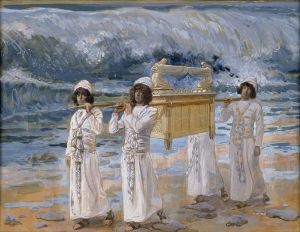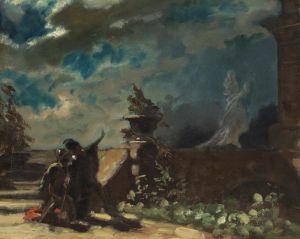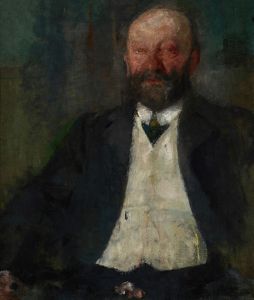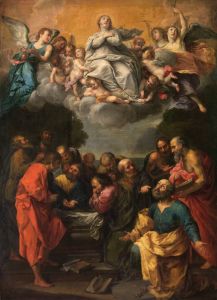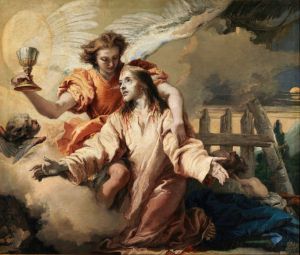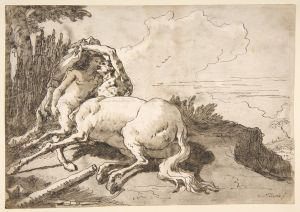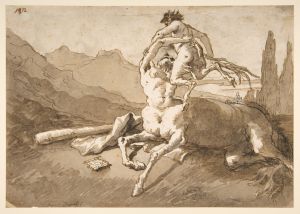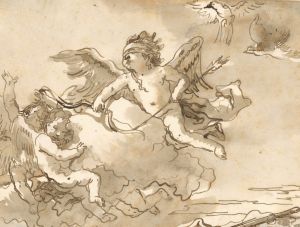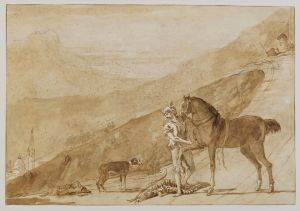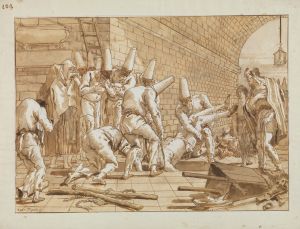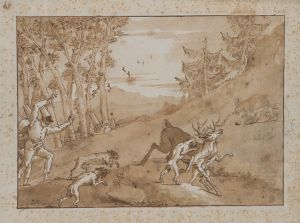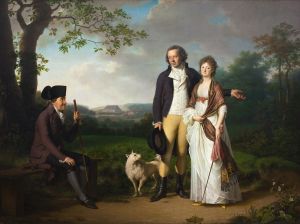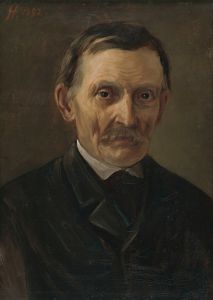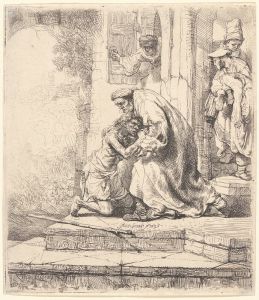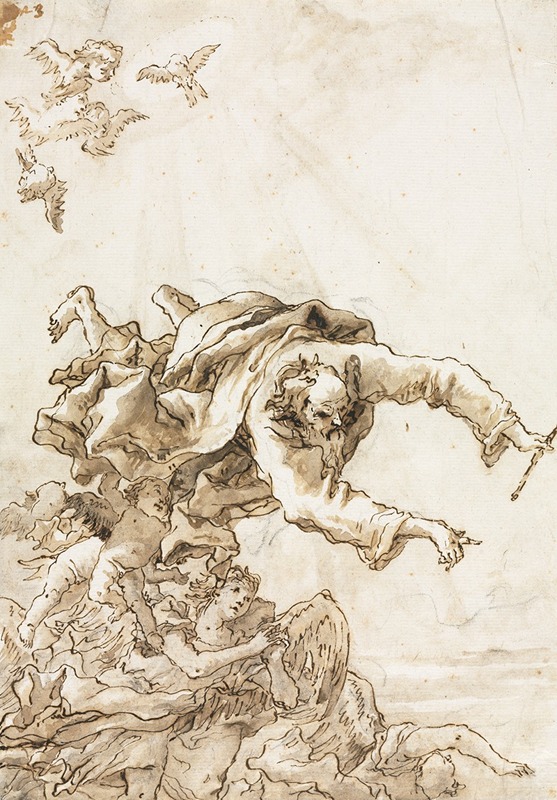
God the Father with Angels and Cherubs
A hand-painted replica of Giovanni Domenico Tiepolo’s masterpiece God the Father with Angels and Cherubs, meticulously crafted by professional artists to capture the true essence of the original. Each piece is created with museum-quality canvas and rare mineral pigments, carefully painted by experienced artists with delicate brushstrokes and rich, layered colors to perfectly recreate the texture of the original artwork. Unlike machine-printed reproductions, this hand-painted version brings the painting to life, infused with the artist’s emotions and skill in every stroke. Whether for personal collection or home decoration, it instantly elevates the artistic atmosphere of any space.
Giovanni Domenico Tiepolo, an Italian painter and printmaker, was an influential figure in the 18th-century Venetian art scene. He was the son of the renowned artist Giovanni Battista Tiepolo and followed in his father's footsteps, developing a distinctive style that combined elements of the Rococo and Baroque movements. One of his notable works is "God the Father with Angels and Cherubs," a painting that exemplifies his skill in religious and mythological themes.
"God the Father with Angels and Cherubs" is a testament to Tiepolo's ability to convey divine and ethereal subjects with a sense of grandeur and movement. The painting depicts God the Father, a central figure in Christian theology, surrounded by a host of angels and cherubs. This celestial assembly is rendered with a dynamic composition that captures the viewer's attention, drawing them into the heavenly realm depicted on the canvas.
Tiepolo's use of color and light in this painting is particularly noteworthy. He employs a palette that includes soft pastels and vibrant hues, creating a sense of depth and luminosity. The light appears to emanate from God the Father himself, symbolizing divine presence and authority. This technique not only highlights the central figure but also adds a spiritual dimension to the work, enhancing its religious significance.
The angels and cherubs surrounding God the Father are depicted with a sense of movement and grace, characteristic of Tiepolo's style. Their flowing garments and expressive poses contribute to the overall dynamism of the composition. The cherubs, often associated with innocence and divine love, add a playful yet reverent tone to the painting. Tiepolo's attention to detail in rendering the delicate features and gestures of these celestial beings demonstrates his mastery of the human form and his ability to infuse his subjects with emotion and vitality.
"God the Father with Angels and Cherubs" reflects the influence of Tiepolo's father, Giovanni Battista, while also showcasing Domenico's unique artistic voice. The painting embodies the grandeur and theatricality of the Baroque era, yet it also incorporates the lighter, more decorative elements of the Rococo style. This blend of influences is a hallmark of Tiepolo's work and contributes to his reputation as a versatile and innovative artist.
The painting is an example of Tiepolo's contributions to religious art during a period when such works were commissioned for churches and private collections. His ability to convey complex theological concepts through visual art made him a sought-after artist in his time. "God the Father with Angels and Cherubs" is a reflection of the cultural and religious milieu of 18th-century Venice, where art played a crucial role in both public and private devotion.
In summary, Giovanni Domenico Tiepolo's "God the Father with Angels and Cherubs" is a masterful representation of divine themes, characterized by its dynamic composition, vibrant use of color, and expressive depiction of celestial figures. The painting stands as a testament to Tiepolo's artistic skill and his ability to convey the spiritual and emotional depth of religious subjects. Through this work, Tiepolo continues to be celebrated as a significant figure in the history of art, whose contributions have left a lasting impact on the portrayal of religious iconography.





